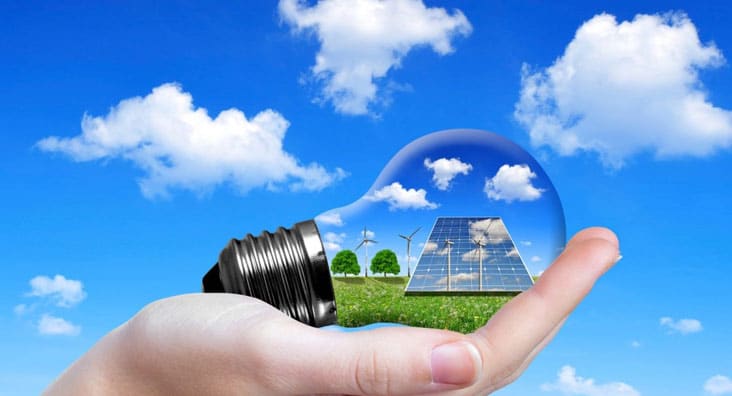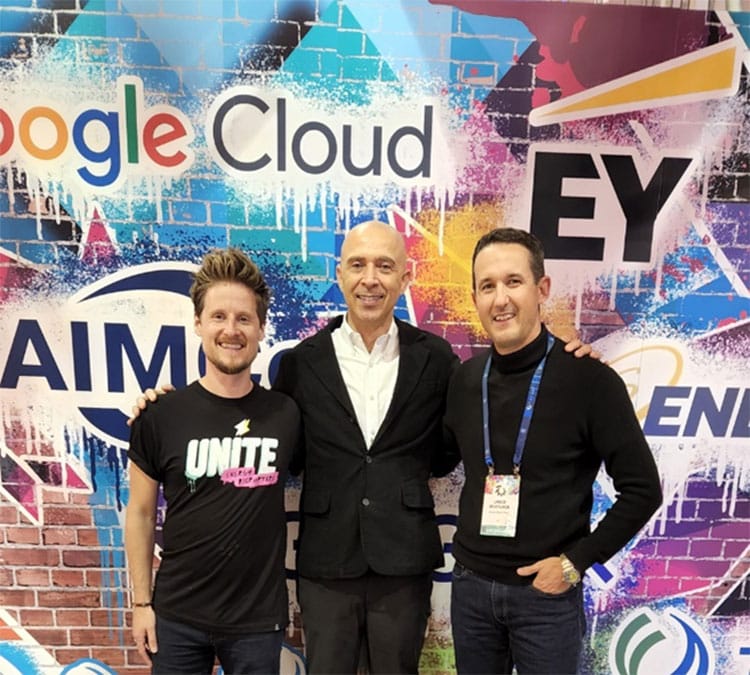Accelerating energy transition with human centricity

A world beset by uncontrollable change: The world has been plagued by the disruptive forces of climate change, COVID-19, the war in Ukraine, and rising inflation causing social and economic upheaval at a scale we have not seen in decades. A recent report by the International Monetary Fund indicates that the business environment is increasingly uncertain, according to the latest reading of the World Uncertainty Index—a quarterly measure across 143 countries.
Volatile, uncertain, complex and ambiguous (VUCA) environments create a need for continual adaptation and changes within organizations. Organizations must manage the change’s rate, turbulence, and magnitude in new and different ways to stay competitive. High VUCA environments create a context that requires more innovation and learning.

So what is disruptive innovation?
Sometimes, the label disruptive is applied too quickly, and the concept is widely misunderstood. David describes disruptive innovation as transforming expensive or highly sophisticated products or services—previously accessible to a high-end or more-skilled segment of consumers—to those more affordable and accessible to a broader population. According to a recent HBR Article, disruptive innovators create a market where none existed. Furthermore, disruptive innovation doesn’t catch on with mainstream customers until the quality meets their standards.
In terms of ‘big corporate,’ large companies focus on innovation and improving existing capabilities, services and products. They are typically great at it. However, is this type of innovation enough for the energy and natural resources sector to deal with the disruptive forces of the energy transition? Most definitely not.
Roberts describes how disruption creates a civil war within a big company, which is why small start-up companies tend to succeed, and large companies shy away from it. This burning platform to innovate disruptively is a vital priority to many energy companies worldwide.
The energy transition and reaching net zero targets is a big hairy audacious goal like no other
In a recent article titled “How Incumbents Survive and Thrive” by London Business School professor Julian Birkinshaw, the researcher argues that disruption occurs at different speeds in different sectors. In the energy and natural resources sector, navigating the energy transition while maintaining shareholders’ performance expectations seems complicated but crucial.
The oil and gas sector is under fire to reduce CO2 and Methane emissions and decarbonize the value chain like never before. Some companies, like B.P., have taken transformative measures and separated the traditional hydrocarbon business from the greener renewable business. Others like Equinor in Norway have announced bold moves toward renewable power generation, blurring the lines between oil and gas and power and utility companies.
Furthermore, power and utility companies face aging infrastructure during immense electrification needs and when transmission and distribution systems are undergoing monumental change. A recent global eMobility study by EY predicts 130m E.V.s in Europe by 2035, requiring 65m+ charging stations. In 2021 1 in 5 new vehicle registrations were electric. These changes will cause an increase in peak load in multi-unit dwellings by 86%. It’s not only the increase in electricity demand, but the unpredictable nature of E.V. charging will present the biggest challenge to the grid. Winning customer trust and acceptance is critical to the success of eMobility. There is a genuine risk that E.V. uptake will accelerate faster than the ecosystem expected to sustain it. As our society’s moral compass changes, so do individual consumption patterns and regulations. Long-standing business models are quickly becoming outdated, and new ones are emerging.
Mining and metal companies are also under pressure to develop new mines sustainably to feed a global hunger for battery metals and minerals like graphite, lithium, copper, cobalt and other rare metals and minerals. A recent report by Bloomberg outlines how the electric car market is driving an insatiable demand for lithium. Still, a supply crisis of the wonder metal could dent the world’s chances of meeting its climate goals. According to an International Energy Agency report, hundreds of new mines will be required to meet the 2030 battery metal demand. The report concludes that the industry needs to build 50 more lithium mines, 60 more nickel mines and 17 more cobalt mines by 2030 to meet global net carbon emissions goals.
Despite these sector challenges, we have to stay focused. Currently, the Earth is about 1.1°C warmer than it was in the late 1800s, and emissions continue to rise. To keep global warming to no more than 1.5°C – as called for in the Paris Agreement – emissions need to be reduced by 45% by 2030 and reach net-zero by 2050. The energy and natural resources sector is in a period of change like no other to support net-zero ambitions.
The importance of the human factor when driving change
In the context of our net-zero targets and getting serious about change and disruption, it’s not only about policy, technical or engineering-related solutions but something more human and people related. In this context, David challenges leaders, organizations and individual people to:
- Embrace change: He says, ‘we can’t control the waves, but we can learn to surf in a sea of change.‘ We need to accept that change is coming in a big way, whether we like it or not. In a world where disruption becomes the norm, you must learn how to do new things. We need to make the change for ourselves and the organizations we work with.
- Not fear failure: Making a difference is hard, and people should not fear failure but rather fear succeeding at things in life that do not matter.
- Put humans at the centre: Remember the critical importance of talent and culture in driving disruptive change because people and behaviour are vital to everything we do. If we cannot change ourselves, how can we expect to change broader systems in society at large?
- Prioritize innovation and disruption: Despite resistance to disrupting big corporations, sustaining long-term business performance is vital. The U.N., one of the world’s most bureaucratic and political organizations, managed to disrupt itself and develop its 17 sustainable goals. David adds, ‘if the U.N. can do it, nobody else has an excuse.’
- Explore individual and collective potential and unleash it: People must be bold and brave to solve these big complex energy transition problems. According to a recent study by the World Resources Institute, 72% of GHGs come from household or “lifestyle” consumption. Large-scale behaviour change away from today’s high-emitting lifestyles is a prerequisite for meeting our Paris climate commitments.
- Remember that people operate on beliefs: Optimism and pessimism matter. Pessimism can stop something from working, but optimism makes something we think could work actually work. David says, ‘we have to keep hold of optimism.’
- Focus on problems worth solving: The importance of solving a problem worth solving and rallying around that is essential to success and being inspired. The clarity of thought and direction created by the problem statement goes a long way to creating practical goals that lead to effective results. Traditional methods of evaluating value also need to be challenged to consider the societal value and drive outcomes that serve future generations.
- Consider the ripple effect: David described how ‘something as small as a butterfly’s wing can create a typhoon halfway around the world.’ We have supercomputers that can model weather worldwide and trace back significant weather events to small whispers in the wind. It’s how innovation and disruption work, so don’t underestimate the power of something small turning into something big.
- Balance competence and confidence: Competence is how good you are at something. Confidence is how good you think you are at something. You need both to drive success when it comes to disruptive innovation.
- Leverage new technologies: Society and technology is rewriting the rules and principles by which businesses operate. Some technologies double in price performance every 1-2 years, which means our world will change more than ever before as the power of computers accelerates. New human-centric technology will provide people with game-changing possibilities and opportunities to have an impact.
Where to from here?
The right answer for our energy future combines many energy forms—renewable, including wind, hydrogen, geothermal and solar, natural gas, LNG, and even small nuclear reactors. China, for example, is building the first commercial land-based SMRs (Linglong-1). Furthermore, oil is not going to go away any time soon. Many of the materials we consume, the plastics we make, the clothes we wear, and the thousands of products we use in our households come from petroleum products. According to the U.S. Department of Energy, petrochemicals derived from oil and natural gas make manufacturing over 6,000 everyday products and high-tech devices possible. However, the mix and how we produce energy need to change and improve dramatically, which will require a whole lot of disruptive change. The change is paving pathways and pitfalls towards a more democratized energy future. This democratized future favours self-reliance, favours technology over resources and empowers small instead of big.
Reflecting on David’s remarks at Energy Disruptors Unite, we’re left thinking that with tremendous change comes tremendous opportunity. We must put humans at the center of defining the proper priority, path and pace around lowering emissions while balancing affordability and security in the future.
Humans have achieved extraordinary things in the past century and will continue to do so in the future. Energy transition might seem daunting, a seemingly impossible task. Still, great things happen to those who don’t stop believing, innovating, trying and learning. We’re both optimists, and as David said, “what might you do tomorrow?”
Written by Dr. Lance Mortlock (EY Canada Managing Partner, Energy & Haskayne School of Business Adjunct Associate Professor) and Krista Yates (EY Canada Senior Manager, Power & Utilities).
Have you read?
The Stories We Tell Ourselves Make—or Break—Our Negotiations by Beth Fisher-Yoshida.
Bridging the Global Gender Gap in STEM by Pari Lennartz.
Changing the World with Entrepreneurship by Rachel Ngom.
Entrepreneurial Endeavours: How To Start Your Own Trade Business.
Bring the best of the CEOWORLD magazine's global journalism to audiences in the United States and around the world. - Add CEOWORLD magazine to your Google News feed.
Follow CEOWORLD magazine headlines on: Google News, LinkedIn, Twitter, and Facebook.
Copyright 2025 The CEOWORLD magazine. All rights reserved. This material (and any extract from it) must not be copied, redistributed or placed on any website, without CEOWORLD magazine' prior written consent. For media queries, please contact: info@ceoworld.biz








